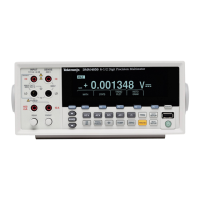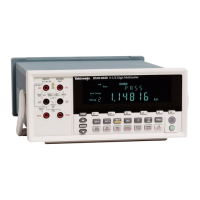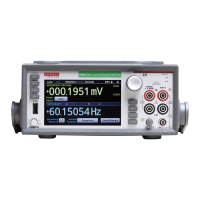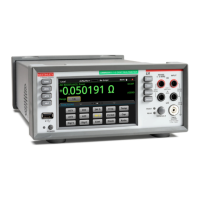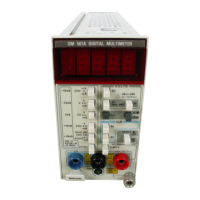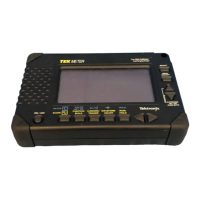PS2520 Series Performance Verification
Handheld and Benchtop Instruments Basic Service
21
4. Verify that the difference between V1 and V2 is ≤50 mV.
5. Press OUTPUT ON/OFF. Verify that the “OUT” indicator turns off.
6. Ensure that the power supply output is disabled. Remove the leads from the
front panel OUTPUT 2 and OUTPUT 1 terminals and connect them to the
OUTPUT 2 (+) and OUTPUT 1 (–) terminals on the rear of the instrument.
Maintain the equipment configuration and polarities shown in Figure 2.
7. Repeat steps 5 through 8 of the Outputs 1 and 2 procedure above and verify
that the difference between V1 and V2 is ≤50 mV.
8. Press OUTPUT ON/OFF. Verify that the “OUT” indicator turns off.
9. Disconnect the DMM and electronic load from the instrument.
Parallel Operation. Use the following steps to check the parallel mode output
accuracy.
1. Press SHIFT
→ PARA/INDEP to configure OUTPUT 1 and OUTPUT 2 for
parallel operation. Verify that the “PARA” indicator lights up on the display.
2. Ensure that the power supply output is disabled. Connect the DMM and
electronic load to the front panel OUTPUT 2 terminals. Maintain the
equipment configuration and polarities shown in Figure 2.
3. Set the DMM to measure 40 VDC.
4. Set up the power supply as follows:
VOLTS SET 36 V
CURRENT SET 3.1 A
OVP SET 38.5 V
5. Press OUTPUT ON/OFF. Verify that the “OUT” indicator lights up on the
display.
6. Enable the electronic load. Adjust the load until the power supply
CURRENT (A) readout indicates 3.000 A.
7. Record the DMM voltage (V1).
8. Turn off the electronic load and record the DMM voltage again (V2).
9. Verify that the difference between V1 and V2 is ≤6 mV.
10. Press OUTPUT ON/OFF. Verify that the “OUT” indicator turns off.
11. Ensure that the power supply output is disabled. Remove the leads from the
front panel OUTPUT 2 terminals and connect them to the OUTPUT 2
terminals on the rear of the instrument. Maintain the equipment configura-
tion and polarities shown in Figure 2.
